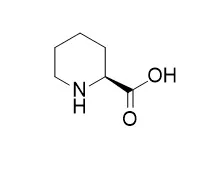Oral cancer is 1 of the 6 most common human cancers, with an annual incidence of >300,000 cases worldwide. This study aimed to investigate potential biomarkers in human saliva to facilitate the early diagnosis of oral squamous cell carcinoma (OSCC).
METHODS AND RESULTS:
Unstimulated whole saliva obtained from OSCC patients (n=30) and apparently healthy individuals (n=30) were assayed with ultra-performance liquid chromatography-mass spectrometry (UPLC-MS) in hydrophilic interaction chromatography mode. The data were analyzed using a nonparametric Mann-Whitney U test, logistic regression, and the receiver operating characteristic (ROC) to evaluate the predictive power of each of 4 biomarkers, or combinations of biomarkers, for OSCC screening.
Four potential salivary biomarkers demonstrated significant differences (P<0.05) in concentrations between patients at stages I-II and the healthy individuals. The area under the curve (AUC) values in control vs OSCC I-II mode based on choline, betaine, Pipecolinic acid, and l-carnitine were 0.926, 0.759, 0.994, and 0.708, respectively. Four salivary biomarkers in combination yielded satisfactory accuracy (0.997), sensitivity (100%), and specificity (96.7%) in distinguishing OSCC I-II from control.
CONCLUSIONS:
Salivary metabolite biomarkers for the early diagnosis of OSCC were verified in this study. The proposed approach is expected to be applied as a potential technique of preclinical screening of OSCC. |






 Cell. 2018 Jan 11;172(1-2):249-261.e12. doi: 10.1016/j.cell.2017.12.019.IF=36.216(2019)
Cell. 2018 Jan 11;172(1-2):249-261.e12. doi: 10.1016/j.cell.2017.12.019.IF=36.216(2019) Cell Metab. 2020 Mar 3;31(3):534-548.e5. doi: 10.1016/j.cmet.2020.01.002.IF=22.415(2019)
Cell Metab. 2020 Mar 3;31(3):534-548.e5. doi: 10.1016/j.cmet.2020.01.002.IF=22.415(2019) Mol Cell. 2017 Nov 16;68(4):673-685.e6. doi: 10.1016/j.molcel.2017.10.022.IF=14.548(2019)
Mol Cell. 2017 Nov 16;68(4):673-685.e6. doi: 10.1016/j.molcel.2017.10.022.IF=14.548(2019)